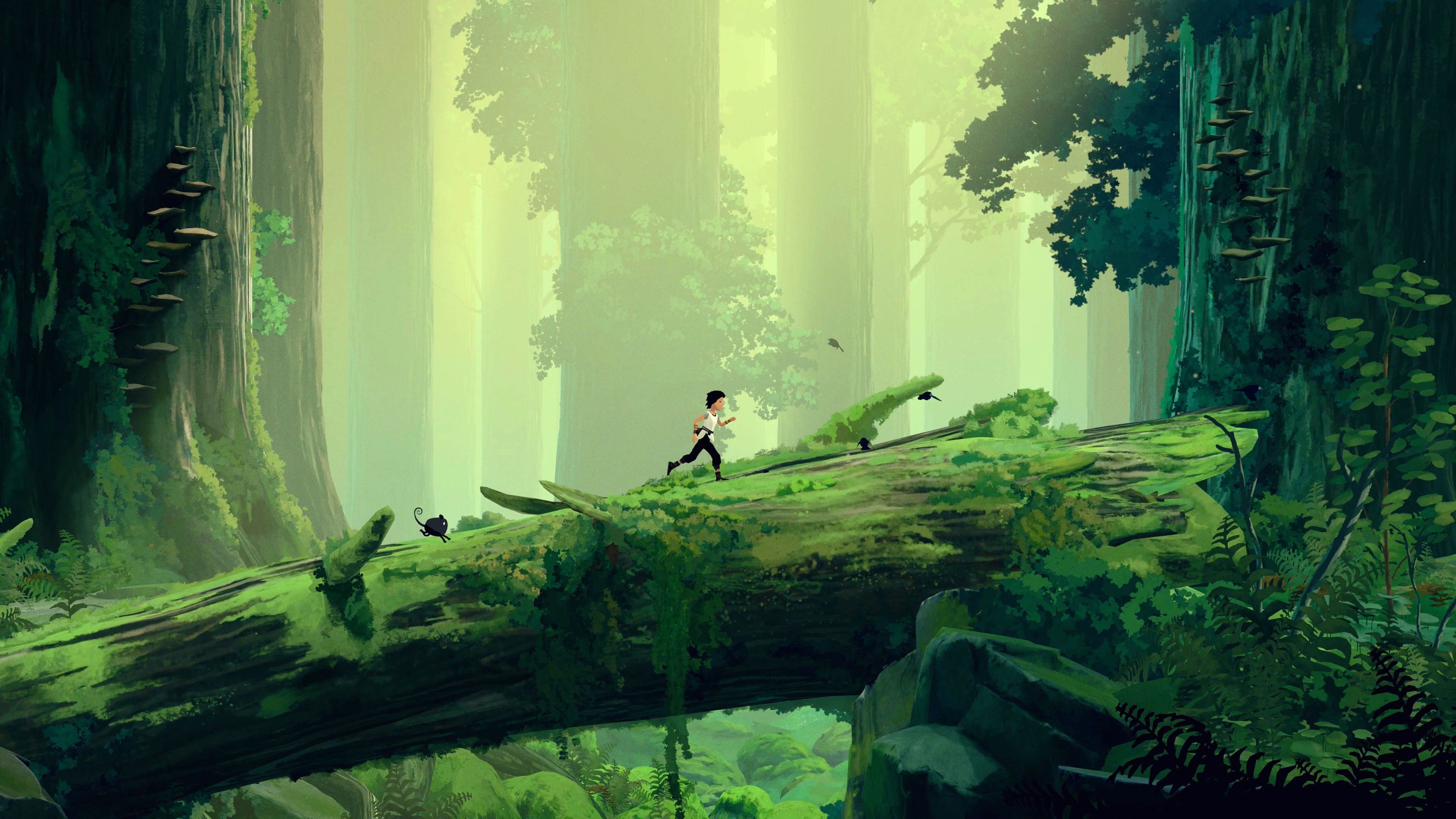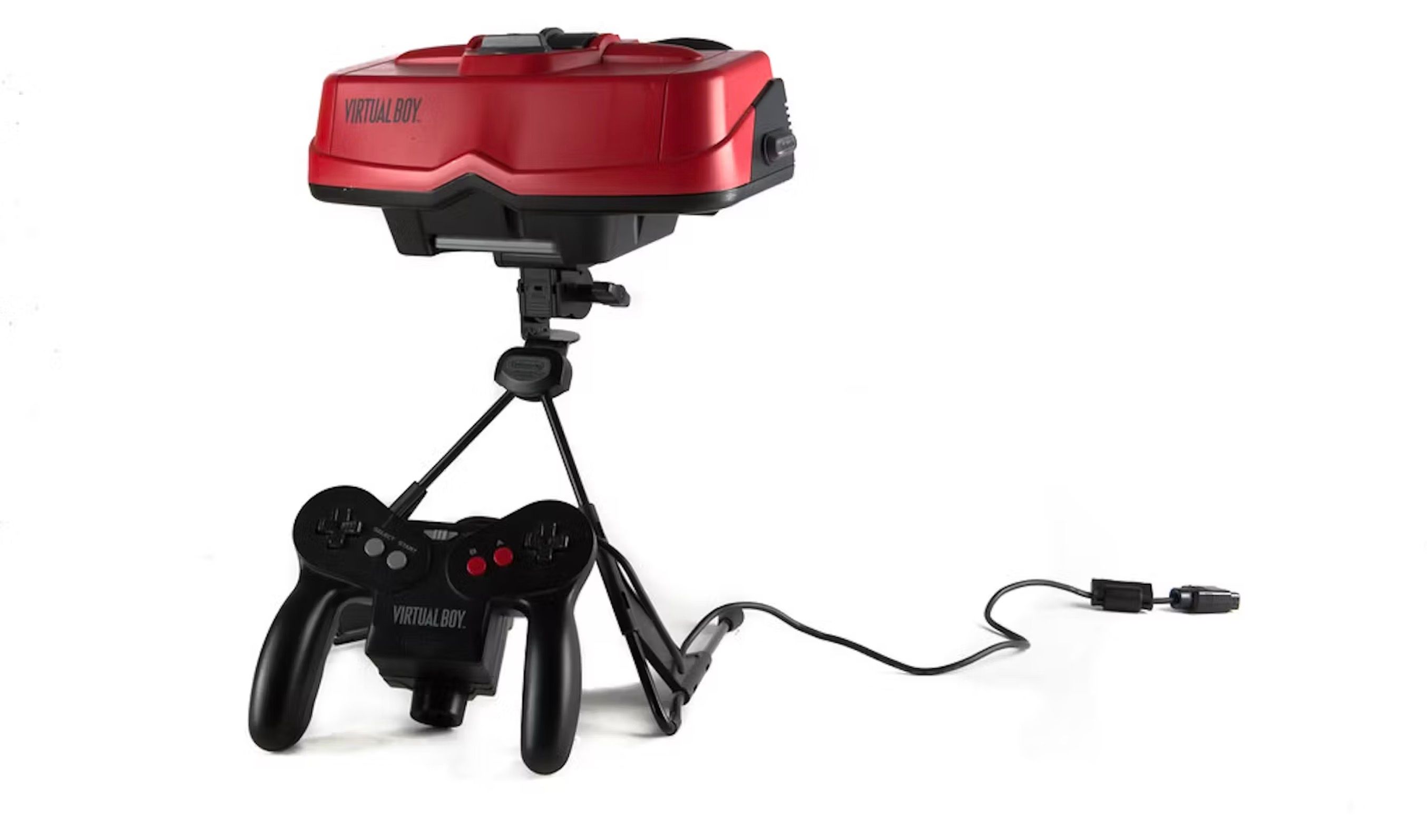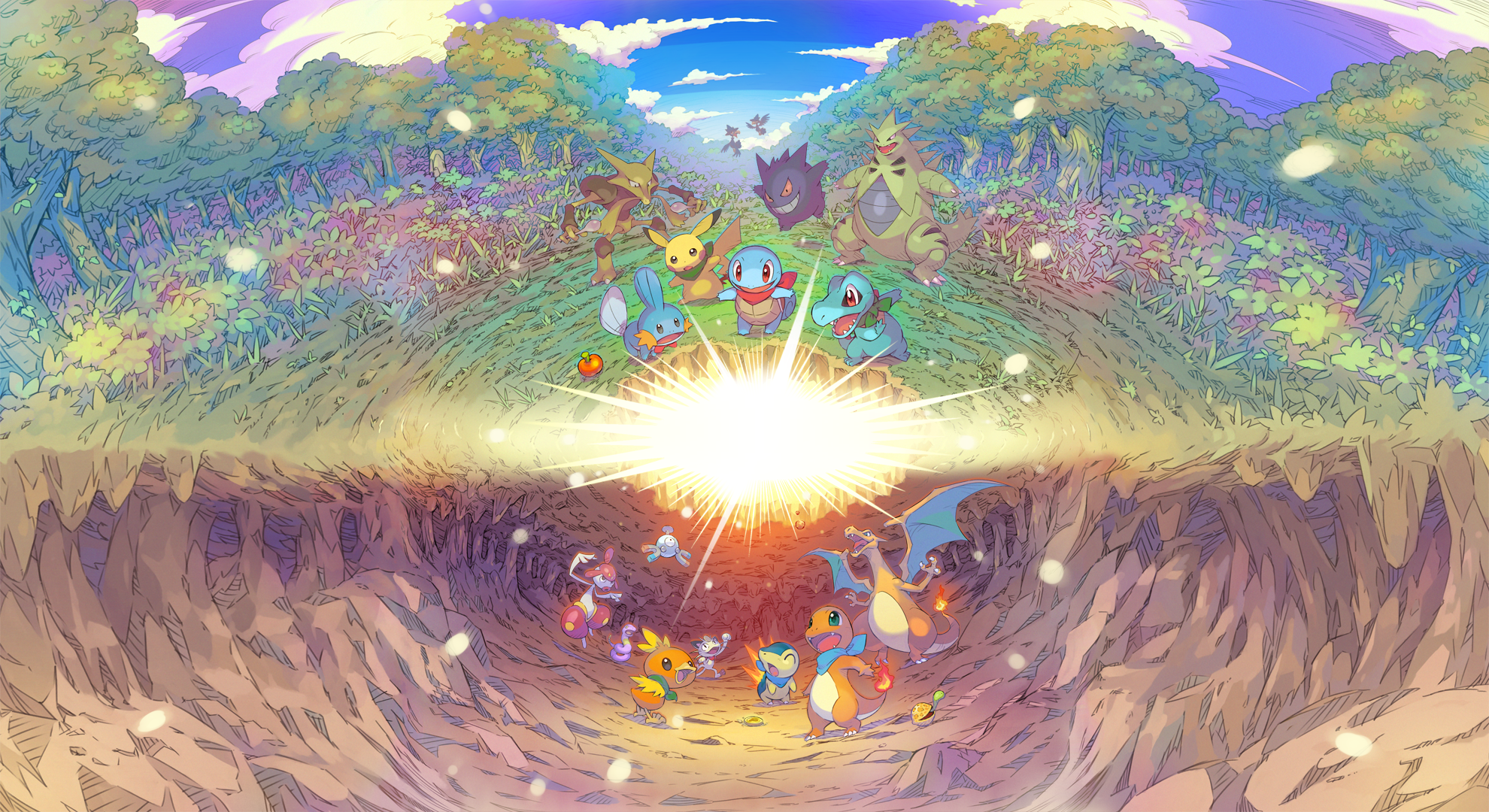Many years before Seeing Red was a Pixar movie about menstruation, “seeing red” perfectly encapsulated Nintendo’s early foray into the VR space, the Virtual Boy. It wasn’t a wearable, like the PlayStation VR and Quests of today, but a tabletop headset users peer into, similar to a Victorian-era stereoscope. Like the original Game Boy, it was a monochrome device, only instead of swamp-water green, all the games were depicted in vivid red against a deep black background.
Sounds kinda weird and not altogether pleasant, right? People in 1995 thought so too. The Virtual Boy was released in August that year in North America and discontinued just eight months later, in March 1996. It is Nintendo’s lowest-selling stand-alone console of all time, with just 770,000 units sold globally. (For context, the Wii U is the second worst, at 13.5 million sold.) Only 22 games were ever produced for it, and only 14 were released in North America.
Essentially a pair of LED binoculars on a tripod, the red-and-black Virtual Boy was priced at $179 and included a copy of Mario’s Tennis, a game that begged to be two-player and conspicuously wasn’t. The device was powered by a whopping six AA batteries embedded in the crotch of its hard-wired, M-shaped controller. It also had dual D-pads, two buttons on each side, and long arms on the left and right sides — presumably to counterbalance the weight of all those damn batteries. It’s an appealingly pared-down controller design (minus the battery brick), and if Nintendo sold a new wireless version in its online store, I would totally buy one.
Because it was the 1990s, the North American TV ads for Virtual Boy tried very hard to be cool and edgy, but did a terrible job of selling the product. For one, they didn’t show footage of any of the games. Also, they positioned the device as a B-movie monster that wanted to eat your eyes, a strange choice considering the persistent — and frankly, quite valid! — concerns about Virtual Boy causing headaches, eye strain, and even eye damage.
Even though the Virtual Boy failed to connect with gamers, the device has had an intriguing and surprisingly impactful legacy on the industry in the 30 years since its launch. It’s an enduring reminder of Nintendo’s ongoing commitment to experimentation, and of dreaming up new ways for people to enjoy video games without breaking the bank. It wasn’t the company’s last foray into VR — although (spoiler alert) the second one wasn’t a hit either.
Monochrome musings
First things first: Why the hell is everything red? The simple answer is that it was the cheapest way to do it.
The late Gunpei Yokoi led the team bringing Virtual Boy to market. He was the creator of the Game and Watch, Game Boy, and the D-pad, in addition to many more gaming innovations. He was also known for his business philosophy of “lateral thinking with withered technology,” which is essentially maximizing older, cheaper tech to create cool experiences for mass audiences. The Game Boy is a perfect example of the enormous potential of that approach, and the success of the “underpowered” Switch illustrates how this ethos persists at Nintendo even today.
While the Virtual Boy had to be affordable to stand a chance on the market, that didn’t mean Nintendo wasn’t willing to invest serious cash and resources. It licensed the stereoscopic 3D tech from a Massachusetts-based company called Reflection Technology, Inc. (or RTI) for $5 million in the early ’90s, then noodled over the project for four years before bringing it to market. Nintendo even built a dedicated manufacturing plant for Virtual Boy consoles in China.
To keep the price tag low, Yokoi and his team scrapped numerous potential features during the development process, including color LED displays, eye-tracking technology, and backlighting. The team also ditched RTI’s original goggle concept in favor of the tabletop form factor, partly owing to concerns about motion sickness and the perceived risk of exacerbating or triggering lazy-eye conditions in children.
The Ultimate History of Video Games by Steven Kent (2002) includes Yokoi’s account of the creative process — and the fateful decision to double-down on red: “We experimented with a color LCD screen, but the users did not see depth, they just saw double. Color graphics give people the impression that a game is high-tech. But just because a game has a beautiful display does not mean that the game is fun to play. Red uses less battery and red is easier to recognize. That is why red is used for traffic lights,” Yokoi explained.
My first encounter with a Virtual Boy was in the electronics department of Sears at the Vallco Fashion Park Mall in Cupertino, Calif. This was a favorite destination of my older brothers, apparently due to it being just off the parking lot entrance for easy shoplifting. I would have been horrified if I realized then that they were stealing, but time has softened my tolerance for petty larceny.
The only game available to play at the display was the pack-in, Mario’s Tennis. I did not particularly care for tennis, but I did adore Mario, and those preferences have not shifted. Sticking my face into Mario’s Tennis at Sears didn’t make me give a shit about tennis, virtual or otherwise. Yet I vividly remember being transfixed by this bottomless box of velvet darkness. There was something tranquil, even meditative, about staring into the soft and unfathomable depths beside all the red distractions. Like a stoner watching a Planet Earth marathon, all I wanted to do was soak in the vibes. I knew the Virtual Boy wasn’t “good.” But I liked it anyway.
My older brother (no longer a shoplifter, if you were wondering) bought a Virtual Boy on eBay a couple of years ago. I eagerly yapped at him that Jack Bros., one of the games included in the bundle, was the first Megami Tensei game released outside Japan, and he could not have been less interested. (Fair enough.) This Atlus dungeon crawler is a hack-and-slash affair where you descend through a dungeon by dropping down to levels below, Bomberman style. You’ll pick up a variety of weapons, like knives, shields, and bombs, and each level is pretty short and sweet. It’s vaguely reminiscent of Stardew Valley’s mines, only, y’know, all red all the time. With endearing sprite art, Jack Bros. understands the assignment and keeps things simple, but playing it for exactly 10 minutes once in my life is all I will ever need. My favorite part was watching the brief introductory cutscene, a cute diorama of a typical fantasy RPG village.
I had assumed the first-person robot boxing game Teleroboxer would essentially be Punch-Out!! with some futuristic VR seasoning, but it’s actually quite a bit more complicated, for better and worse. On the plus side, your mechanized opponents look pretty badass, even 30 years later. On the flip side, this is the one Virtual Boy game I’ve tried that makes heavy use of the dual D-pads, and boy, this control scheme isn’t fun at all. The biggest pain point is that you block by pressing inward on the D-pads, rather than pressing down. There’s just too dang much for you to do with each hand in Teleroboxer, and while I’m sure some players loved it, I am not one of them.
Like so many things I loved as a kid, the Virtual Boy is not quite as captivating as I would like to remember. It’s easy to see the mirrors and boundaries of the metal box that conspire to create the illusion of 3D images once you know they’re there. Yet, even now, there’s still something intoxicating about using it. I still couldn’t care less about playing it; the best way to experience Virtual Boy is simply to stare and let it wash over you, like a Magic Eye poster. What used to feel like falling into an endless garden of weirdo darkness is now roughly akin to the fleeting tingles from a shot of cheap booze. But I still like it anyway.
Tough room, amirite?
As a gaming console that was interesting but also Not Very Good, the Virtual Boy had the distinct misfortune of making its debut amid unusually stiff competition. 1995 also saw the release of PlayStation and Sega Saturn, both of which launched with several games boasting bleeding-edge 3D graphics. Sony had Ridge Racer and Tekken, while Sega had Virtua Fighter and Panzer Dragoon.
Nintendo wasn’t exactly going through a lame-duck period either, though internal focus had shifted to the launch of Nintendo 64 in 1996. The Game Boy was still going strong, even while Pokémon Red and Blue was still three whole-ass years away from its stateside debut. And the Super NES served up a slate of all-time bangers in ’95, including Chrono Trigger, Super Mario World 2: Yoshi’s Island, and the latter-day cult darling Earthbound. Would you spend $179 to play Mario’s Tennis and Teleroboxer in the face of this succulent gamer’s buffet? No, you would not! And you would be right.
That said, it doesn’t seem that the fate of the Virtual Boy surprised the company’s top brass. In a 2015 piece for Fast Company, Yokoi biographer Takefumi Makino noted that the Nintendo wunderkind had known for a while the project was not going well: “Even Mr. Yokoi admitted that he himself felt uneasy during development. He described it as a kind of ‘hiri-hiri’ feeling. This is an onomatopoeia that only exists in Japanese, but think about it as the sort of feeling you would get when being cooked slowly over a frying pan.” Funnily enough, “hiri-hiri” might also be an apt way to describe how using a Virtual Boy feels on your eyes.
Nintendo didn’t let the Virtual Boy’s failure become an excuse to avoid bold creative choices for its hardware. It would experiment with 3D imagery again with 2011’s 3DS handheld, which used a parallax barrier over the screen to create a no-glasses 3D feature. The effect looked pretty cool, and though the tech wasn’t exactly transformative, it wasn’t instantly hated like the Virtual Boy, either. Nintendo even went back to the pared-down VR well in 2019, with the launch of the cardboard construction Labo VR kit. The $80 bundle included 64 simple minigames — stuff like driving a car or filling a kitchen drawer with mustard. It didn’t sell well, but it seems to be remembered fondly by the folks who took a chance on it.
Nintendo’s commitment to stretching our conceptions of what a video game “should be” has also been hugely successful on the software side in recent years. Consider games like The Legend of Zelda: Tears of the Kingdom and Donkey Kong Bananza, both of which let you “break” elements of the game that are typically thought of as foundational, like traversal or the camera. Both of these games cultivate a sense of endlessness, of falling ever deeper, one that feels strangely similar to jamming my face into the Virtual Boy in fall 1995. Would we have gotten the dizzy exhilaration of hurtling downward from Tears of the Kingdom’s Sky Islands, past the surface of Hyrule, and into the Depths without the Virtual Boy? I strongly suspect the answer is no. After all, if Link has taught us anything, it’s that the failures are some of the best parts of the adventure.













